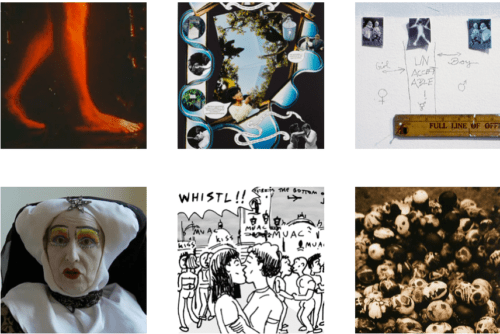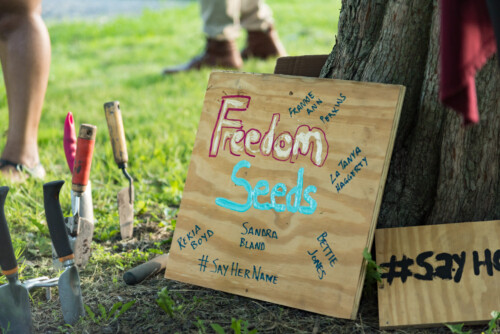Most of the organizers working on the vision statement agreed on several important reforms including lifting the HIV ban and the one year deadline for applying for asylum, repealing the REAL ID Act, resisting militarization of the US-Mexico border, reinstating in-state tuition fees for undocumented immigrants, and creating a humane, nonpunitive path for legalization for the estimated 12 to 15 million undocumented immigrants in the country. There were some differences of opinion, however. The most contentious issue concerned the framing of specific legislation that would allow LGBT American citizens and green card holders to sponsor their conjugal partners. The legislation, known as the “Uniting American Families Act” (UAFA), is a policy priority of Immigration Equality and O4I. These two organizations, though deeply involved in the work of framing the statement, finally decided not to endorse the final version once the decision was made not to centralize the UAFA in the document. The other organizers decided to argue against privileging conjugal couples generally, whether straight or gay, as the locus of immigration benefits, while arguing for the recognition of the flexible kinship and friendship networks within which LGBT immigrants live and work.1
After we sent out the final document in February 2007, seeking endorsements from key LGBT and immigrant rights organizations, we were met with several rejections from national LGBT organizations. Some claimed that the vision statement was too broad and not sufficiently focused on LGBT-specific issues.2 This signaled to us the narrow understanding of immigration reform and social change in general of the mainstream LGBT rights organizations. However, we saw an exciting number of endorsements from LGBT centers across the country, especially those in immigrant-heavy states such as Washington, California, Illinois, Michigan, New York, Texas, and Arizona. Political formations such as Stonewall Democrats of Colorado and statewide LGBT lobbying organizations such as Equality Illinois and Equality Alabama also endorsed the statement. Unequivocal endorsements came from LGBT labor organizations such as Pride-At-Work (AFLCIO), LGBT anti-violence programs including the National Coalition of Anti-Violence Projects, and LGBT organizations of color such as the Audre Lorde Project.
The immigrant rights movement turned out a more positive response to the vision statement overall. National immigrant rights groups including the National Network for Immigrant and Refugee Rights, the National Immigration Project, the National Lawyers Guild, and the American Friends Service Committee, along with several civil rights and local immigrant rights organizations, endorsed the statement. However, more centrist Washington-DC-based immigration policy organizations declined to endorse it. Their main objections included our outright rejection of the proposed guest workers programs, the punitive process for legalization of undocumented immigrants, and the construction of the fence along the US-Mexico border. The vision statement process was an exercise in cross-movement organizing, helping to push the LGBT rights movement to broaden its conception of immigrant rights and pressing the immigrant rights movement toward a more progressive, humane, non-heteronormative vision of immigration reform. It helped us identify progressive allies from the two movements on issues of LGBT immigrants.
The debate on immigration reform and rights of immigrants rages on, especially in context of virulent attacks on immigrant mobility through statewide legislation such as SB1070 (PDF) in Arizona (otherwise known as the “show me your papers” bill) or the passage of federal legislation such as the “Secure Communities Act,” which calls for heightened collaboration between local police and federal immigration officials. The cross-movement organizing tactics and a wider vision of social justice offered by the queer immigration vision statement of 2007 can still be seen in recent organizing initiatives. Debates flourished around the DREAM Act among young activists organizing around the rights of undocumented students. The DREAM Act calls for legalizing children (those not born in the United States) of undocumented immigrants who are attending school in the United States. The passage of the DREAM Act is predicated upon three crucial requirements: 1) undocumented students who will benefit from legalization need to provide military service; 2) acknowledgement of the parents’ undocumented status, and; 3) age restrictions, such as fixing the upper age limit up to 23 for those applying for relief. The DREAM Act organizing efforts, including national sit-ins at Senator John McCain’s office in Tucson, Arizona, have largely been carried out by undocumented young people.
LGBT undocumented students have been a huge part of the sit-ins and national protests. Many of them popularized slogans such as “undocumented and unafraid,” and “double coming out.” However, the movement’s youth leaders remain sharply divided over their engagements with US state and legislative process. In a public letter to the DREAM movement, Raul Al-qaraz Ochoa (one of the lead organizers of the sit-in at Senator John McCain’s office) rescinded his support from the DREAM Act. Raul calls upon the activists (popularly referred to as the “dreamers”) to critically examine their demands and the ways in which their dreams were being “manipulated by Democrats.” He further criticized the unquestioned acceptance of military service and acknowledgment of the “illegal status” of their parents.3 Raul ends his open letter by reflexively acknowledging his position as a person of color holding US citizenship status, and yet raising critical questions. He asks:
So if I support the DREAM Act, does this mean I am okay with our people being used as political pawns? Does this mean that my hands will be smeared with the same bloodshed the U.S. spills all over the world? Does this mean I am okay with blaming my mother and my father for migrating “illegally” to the U.S.? Am I willing to surrender to all that in exchange for a benefit?
His critique points out the limited nature of the legislative strategies being adopted by the immigrant rights movement, and forces the DREAM Act movement to reconsider the web of relationships within which undocumented students flourish (namely their communities of origin and communities of residence). Raul’s critique, much like the queer vision Statement of 2007, seeks to disrupt the uncanny assemblage of heteronormative family, global capital, and the increasingly militarized US nation-state in which LGBT immigrant bodies remain deeply enmeshed.
The queer immigration vision statement was not the first attempt to offer a fuller vision of immigration and sexual reform within present-day United States, nor is it the seminal one. The vision statement, much like Raul’s blog, departs solely from asking for recognition of certain kinds of bodies from the US state. Queering immigration calls for an examination of the power relationships which undergird the lives and aspirations of LGBT-identified immigrants, and in doing so humbly seeks to join larger struggles against global capital and violence against racialized, sexualized, and feminized bodies across geopolitical borders.
Appendix A
QUEERS AND IMMIGRATION: A VISION STATEMENT (PDF)4
- See Marta Donayre, “Nuclear on the Concept—‘Immediate Family’ Needs Redefinition” New American Media 17 Aug. 2006. Accessed on 12/21/2011. Similarly see: Yasmin Nair, “Gay Immigration and (In) Equality” Windy City Times 6 Jun. 2007. Accessed on 12/21/2011. [↩]
- National LGBT rights organizations that declined to sign on to the vision statement include the Human Rights Campaign, the National Gay and Lesbian and Taskforce, Gay and Lesbian Alliance against Defamation, and Lambda Legal. Subsequent conversations were held with the National Gay and Lesbian and Taskforce, following which the task force agreed to partner with QEJ and other members of the “Lift the Bar Coalition” to work on repealing the US HIV immigration ban. [↩]
- See Raúl Al-qaraz Ochoa, “Letter to the DREAM Act Movement: My Painful Withdrawal of Support for the DREAM Act” Antifronteras.com 18 Sept. 2010. Accessed on 11/09/2011. [↩]
- Queers for Economic Justice, “Queers and Immigration: A Vision Statement” (PDF). (New York: Queers for Economic Justice, 2006). Accessed on 12/21/2011. [↩]




